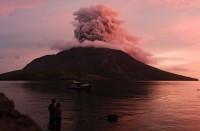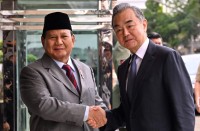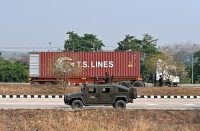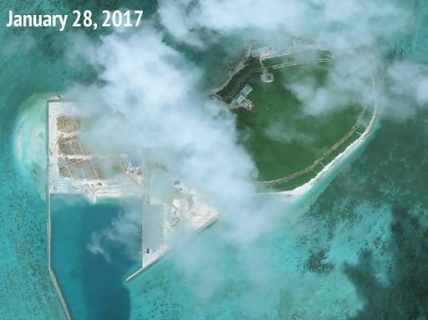
China is expanding artificial islands in disputed South China Sea areas despite saying it stopped two years ago, according to a security think tank that released satellite images it said showed the land reclamation. Beijing claims most of the sea and has been turning reefs in the Spratly and Paracel chains into islands, installing military aircraft and missile systems on them — an activity the Asia Maritime Transparency Initiative (AMTI) said was continuing. / AFP PHOTO / CSIS / DigitalGlobe / —–EDITORS NOTE — RESTRICTED TO EDITORIAL USE – MANDATORY CREDIT “AFP PHOTO / CSIS Asia Maritime Transparency Initiative / DigitalGlobe” –
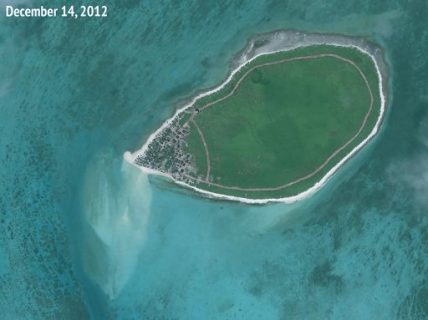
MANILA, Philippines (AFP) — China is expanding artificial islands in disputed South China Sea areas despite saying it stopped two years ago, according to a security think tank that released satellite images it said showed the land reclamation.
Beijing claims most of the sea and has been turning reefs in the Spratly and Paracel chains into islands, installing military aircraft and missile systems on them — an activity the Asia Maritime Transparency Initiative (AMTI) said was continuing.
“China’s own reclamation work did not end in mid-2015 with the completion of its artificial islands in the Spratlys. Beijing continues to reclaim land farther north, in the Paracel Islands,” the security think tank said on its website.
Chinese Foreign Minister Wang Yi told reporters on the sidelines of the Association of Southeast Asian Nations (ASEAN) Regional Forum in Manila on Monday that Beijing completed its South China Sea reclamation activities two years ago.
“I also wanted to tell you that two years ago, China had already completed the reclamation. That is something I can tell you for sure,” Wang said, adding “it is not China” which was conducting ongoing reclamation activities.
The AMTI website on Wednesday posted satellite pictures that it said showed Wang’s statements were “false”.
China has since 2015 dredged a new harbor and added 10 hectares (about 25 acres) of land on Tree island in the Paracels, and has recently completed a new helipad and installed wind turbines and photovoltaic solar arrays there, it said.
Since reclamation work to connect on two other Paracel islands was washed out by a typhoon last October, China has undertaken additional reclamation and built new structures there, it added.
China claims nearly all of the strategically vital sea, through which $5 trillion in annual shipping trade passes and is believed to sit atop vast oil and gas deposits.
Its sweeping claims overlap with those of ASEAN members Vietnam, the Philippines, Malaysia and Brunei, as well as Taiwan.
China on Sunday scored a diplomatic coup when foreign ministers from the 10-member ASEAN bloc released a diluted joint statement on
the dispute that failed to mention China on the issue and agreed to its terms on how to negotiate a resolution.
Nevertheless, China was angered by wording in the statement pushed by Vietnam that expressed concerns by some about land reclamations, even though it did not name Beijing.
The Philippines had for many years stood alongside Vietnam as one of the strongest opponents to Chinese expansionism.
A United Nations-backed tribunal ruled last year that China’s territorial claims in the sea were without legal basis.
But the Philippines, under President Rodrigo Duterte’s new administration, decided not to use the verdict to pressure. It instead built closer ties with China in return for billions of dollars worth of investments and aid.
Philippine Foreign Secretary Alan Peter Cayetano told reporters on Tuesday he had lobbied against referring to land reclamation in the ASEAN statement because he believed China had stopped.
“They (Chinese) are not reclaiming land anymore,” Cayetano said.
Agence France-Presse

